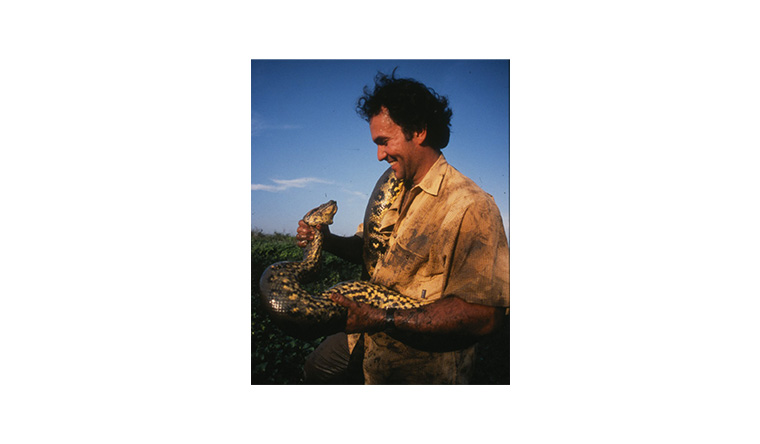
Jesús Rivas
Dr Jesús A Rivas was born in Caracas, Venezuela, and graduated with a degree in biology from the Universidad Central de Venezuela. His research interests include natural history, ethology and conservation. He received his PhD from the University of Tennessee in Ecology and Evolutionary Biology and has been studying natural history, behavioural ecology systematics and conservation of anacondas since 1992. Rivas has taught courses in tropical ecology and is currently working at New Mexico Highlands University where he oversees the ecology lab while he continues his research and teaching. Dr Rivas has written numerous scientific papers and books about the world's heaviest snake species, including Anaconda: The Secret Life of the World's Largest Snake (2020).
Heaviest species of snake
The heaviest species of snake is the green anaconda, native to wetlands and slow-moving rainforest rivers of tropical South America and Trinidad. In February 2024, the long-recognized single species of this large constrictor was split into two based on genetic and geographic differences: the southern green anaconda (Eunectes murinus) and the northern green anaconda (Eunectes akayima). Fully grown, females of both species obtain a typical weight of between 30 and 70 kg (65–155 lb), measuring 3–5 m (9 ft 10 in–16 ft 4 in) from head to tail. Occasionally much larger specimens (almost certainly all females) have been reported, reaching between 7–8 m (22–26 ft) long with an estimated weight in excess of 300 kg (660 lb); it’s likely that the heftiest examples are either pregnant or have just consumed a large meal. Green anacondas are distributed across northern South America and the Caribbean island of Trinidad. The two species are thought to have diverged almost 10 million years ago, and they now differ genetically by about 5.5%.



